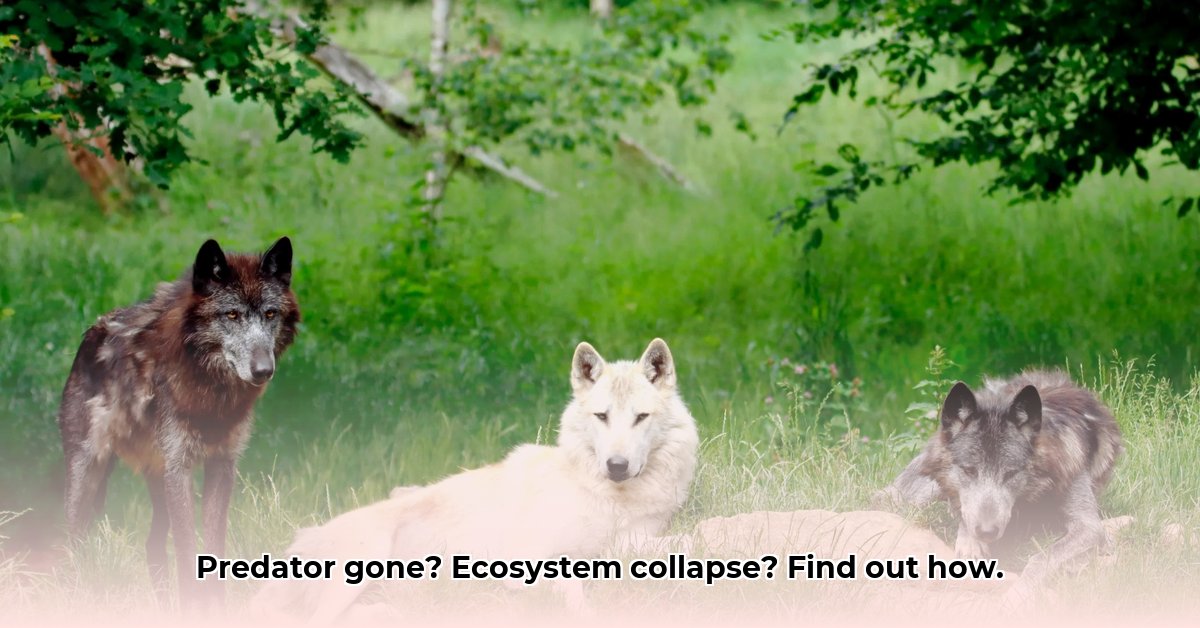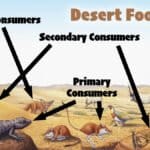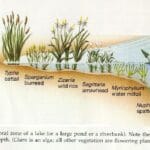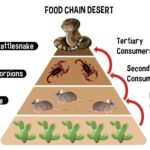Have you ever considered how removing a single species could trigger a chain reaction, drastically altering an entire ecosystem? This phenomenon, known as a trophic cascade, illustrates the intricate connections within nature. Learn more about keystone species and their vital roles. It’s a ripple effect where the presence or absence of a top predator reverberates through the food web, influencing plant communities, animal populations, and even the physical landscape. From the reintroduction of wolves in Yellowstone to the protection of sea otters in the Pacific, understanding these cascades is crucial for effective conservation.
Unveiling Trophic Cascades: Interconnectedness and Predator-Prey Relationships
Imagine a finely balanced ecosystem, each species playing a critical role. Now, picture the removal of a key player – a top predator like a wolf, shark, or sea otter. This seemingly isolated event can set off a trophic cascade: a chain reaction initiated by the loss or addition of a single species, fundamentally reshaping the entire ecosystem. This phenomenon underscores the profound interconnectedness of nature and highlights how a single species can exert a disproportionate influence on the surrounding environment. The removal of a crucial thread unravels the entire tapestry, emphasizing the critical importance of biodiversity conservation.
Yellowstone’s Wolves: A Testament to Ecosystem Restoration
The story of Yellowstone National Park is a powerful illustration of trophic cascades in action. Gray wolves, once native to the region, were nearly eradicated by the early 20th century. With the absence of this apex predator, the elk population exploded, leading to excessive grazing of willow and aspen trees along rivers and streams. This overgrazing had cascading effects on other species. Beavers, who rely on these trees for dam construction, suffered, and songbird populations declined due to the loss of nesting habitat. In 1995, a bold decision was made to reintroduce wolves to Yellowstone. The results were nothing short of transformative. The elk population stabilized, vegetation began to recover, rivers stabilized as erosion decreased, and beaver populations flourished. The reintroduction of wolves triggered a cascade of positive changes throughout the park, demonstrating that restoring a top predator can be a highly effective strategy for ecosystem restoration. The wolf reintroduction program highlights the effectiveness of apex predator restoration and demonstrates how the loss of riparian vegetation affects overall ecosystem health.
Mesopredator Release: The Unintended Consequences of Predator Removal
The removal of top predators can have unforeseen consequences, one of which is mesopredator release. Mesopredators are mid-level predators, such as coyotes, foxes, raccoons, and weasels that are normally kept in check by apex predators. When the top predator is removed from an ecosystem, these mesopredators can experience a population boom, leading to increased predation pressure on smaller prey animals. In Yellowstone, with the absence of wolves, coyote populations soared, impacting smaller prey species and disrupting the intricate balance of the food web. This seemingly counterintuitive consequence of removing top predators highlights the complexity of ecological interactions and underscores the need to consider the full range of potential impacts when making conservation decisions.
Ocean’s Otters: Guardians of Kelp Forests and Coastal Ecosystems
Trophic cascades are not limited to terrestrial environments; they also play a critical role in marine ecosystems. Sea otters, charismatic marine mammals, are keystone predators in kelp forests. Their primary food source is sea urchins, voracious herbivores that graze on kelp. When sea otters were heavily hunted for their fur, sea urchin populations exploded, leading to the widespread destruction of kelp forests. These underwater forests provide critical habitat for a diverse array of marine species, and their loss had cascading effects throughout the ecosystem. The recovery of sea otter populations has been directly linked to the regeneration of kelp forests, demonstrating the critical role these predators play in maintaining the health and stability of coastal ecosystems. Protecting a single species can have wide-reaching, positive consequences, as kelp forests offer key habitats for many marine species, making their protection crucial.
The Complexity of Nature’s Web: Environmental Factors and Ecosystem Dynamics
While the Yellowstone and kelp forest examples provide compelling illustrations of trophic cascades, it’s important to recognize that these interactions are not always straightforward. The impact of losing a top predator can vary depending on the specific characteristics of the ecosystem. Factors such as climate, available food resources (bottom-up factors), and the presence of other interacting species can all influence the strength and direction of trophic cascades. Some studies suggest that trophic cascades may be less pronounced in certain ecosystems compared to others. Scientists are continually working to unravel the complexities of these interactions, and ongoing research is constantly refining our understanding of trophic cascades and their role in ecosystem dynamics. These limitations underscore the need for continued research and a nuanced approach to conservation.
Understanding Cascading Effects
| Removed Species | Initial Impact | Secondary Impacts | Long-Term Effects |
|---|---|---|---|
| Wolves (Yellowstone) | Elk overpopulation | Riparian habitat destruction, decreased beaver and songbird populations | Ecosystem degradation, then recovery upon wolf reintroduction |
| Sea Otters (Kelp Forests) | Sea urchin overpopulation | Kelp forest destruction, loss of biodiversity | Ecosystem degradation, then recovery upon otter population increase |
A Holistic Approach to Conservation: Preserving Ecosystem Balance for a Sustainable Future
Understanding trophic cascades is crucial for effective conservation efforts. We need to move beyond a species-centric approach and adopt a more holistic perspective that considers the entire food web and the intricate connections between species. This integrated approach involves several key strategies:
- Protecting apex predators: The preservation of apex predators is vital for maintaining ecosystem balance and regulating populations of herbivores and mesopredators.
- Sustainable fishing practices: Overfishing can disrupt marine food webs and trigger devastating trophic cascades, highlighting the need for responsible fishing practices.
- Managing mesopredator populations: In some cases, carefully managed hunting or other control measures may be necessary to mitigate the negative impacts of mesopredator release.
- Integrated ecosystem management: This holistic approach considers both top-down (predation) and bottom-up (resource availability) influences on ecosystems, ensuring a more comprehensive and effective conservation strategy.
Ignoring the interconnectedness of life and the cascading effects of removing key species is a short-sighted approach that can have detrimental consequences for ecosystem health. The long-term well-being of our planet depends on our ability to recognize and protect these delicate balances. The future of our ecosystems hinges on our capacity to proactively manage the far-reaching consequences of trophic cascades. A balanced ecosystem is a resilient ecosystem, capable of weathering environmental change and providing essential services for generations to come.
Predicting Long-Term Effects of Trophic Cascade Restoration in Diverse Ecosystems
Key Takeaways:
- Trophic cascades, the ripple effects from changes at the top of the food chain, are complex and context-dependent.
- Introducing or removing a keystone species can dramatically reshape an ecosystem over decades.
- Predicting long-term impacts requires understanding intricate species interactions and environmental factors.
- Data limitations often hinder precise predictions, necessitating careful monitoring and adaptive management.
- Invasive species can act as significant disruptors, triggering unexpected shifts in community composition.
The Flathead Lake Case Study: A Century of Change and Aquatic Ecosystem
Flathead Lake, Montana, offers a compelling case study of a long-term trophic cascade. For decades, the lake’s ecosystem was characterized by a robust population of kokanee salmon. However, the introduction of non-native lake trout, followed by the invasion of opossum shrimp (Mysis diluviana), set in motion a chain of events that dramatically altered the lake’s ecological structure. The kokanee population plummeted, while lake trout rose to become the dominant apex predator. The Mysis shrimp, an intermediate player, fundamentally restructured the food web by outcompeting native zooplankton species. This, in turn, impacted smaller fish species that relied on zooplankton as a primary food source. The result was a cascading effect that impacted the entire lake ecosystem, underscoring the potential for invasive species to trigger profound changes in aquatic environments.
Understanding the Complexity: Why Prediction is Difficult and Ecological Modeling Needed
Predicting the long-term consequences of altering a food web is an incredibly challenging endeavor that requires a deep understanding of the intricate, interwoven relationships between species. Even in the relatively well-studied Flathead Lake ecosystem, our understanding remains incomplete. While studies have revealed a clear sequence of events, there are still significant knowledge gaps regarding the initial transitions and the specific influence of factors such as nutrient levels.
Factors to Consider for Accurate Prediction in Environmental Monitoring
Several key factors influence our ability to predict long-term outcomes:
- Species Interactions: A comprehensive understanding of all species’ interactions, both direct (predator-prey) and indirect (competition for resources), is paramount. This requires extensive data collection and analysis, often spanning many years.
- Environmental Factors: Climate change, nutrient loading, and other environmental variables can significantly impact ecosystem dynamics. Incorporating these changing conditions into predictive models is crucial but immensely complex.
- Data Availability: Long-term, high-quality data on species abundance, distribution, and interactions are essential for building accurate predictive models. Unfortunately, such data is often scarce, particularly for historical periods.
Modeling the Future: Approaches and Limitations in the Face of Climate Change
Scientists use ecological models to simulate ecosystem responses to changes. These models incorporate data on species interactions and environmental factors to predict future states. However, even the most sophisticated models have limitations. They simplify complex realities, relying on assumptions that may not always hold true. The inherent variability in natural systems introduces significant uncertainty. Plus, unexpected events (new invasive species, extreme weather) could disrupt even the most well-calibrated model.
Management Implications: Adaptive Strategies are Key for Marine Conservation
Given the inherent uncertainties in predicting long-term outcomes, adaptive management is crucial. This approach emphasizes continuous monitoring, evaluation, and flexible adjustments to management strategies based on ongoing observations. It’s not about making perfect predictions; it’s about using the best available information, learning from successes and failures, and adapting as needed. For Flathead Lake, this might involve adjusting fishing regulations for lake trout based on population size and carefully monitoring the responses of other native fish species. It necessitates collaboration between government agencies, researchers, and local communities.
Moving Forward for Sustainable Ecosystem Management
Predicting the long-term effects of trophic cascade restoration requires a multi-faceted approach. We need to enhance data collection efforts, refine ecological models, and embrace adaptive management strategies. The Flathead Lake example powerfully demonstrates the complex repercussions of disrupting ecological balance and underscores the need for a more comprehensive understanding of these dynamics – vital not only for Flathead Lake itself, but for other diverse ecosystems facing similar challenges globally.
Trophic Cascades in Marine Ecosystems: Case Studies and Conservation Strategies
Key Takeaways:
- The concept of trophic cascades is well-established in simpler ecosystems, but applying it to complex marine systems requires careful consideration.
- The hypothesis of a shark-mediated trophic cascade in the Northwest Atlantic, impacting bivalve populations, lacks robust empirical support.
- Alternative explanations for bivalve decline, such as overfishing and disease, are crucial.
- Misinterpretations of scientific findings can significantly influence conservation and management decisions.
- Robust data collection and analysis is vital for accurate assessment of trophic cascades.
- Evidence-based fisheries management policies are essential for sustainable ecosystem health.
Understanding Trophic Cascades: A Domino Effect in Nature in the Aquatic Food Web
Imagine a perfectly balanced stack of dominoes. Knock one over, and the whole system topples. That’s essentially what a trophic cascade is: a ripple effect through an ecosystem caused by changes at the top of the food chain. In simpler terms, it’s a chain reaction that starts with a change in the population of a top predator, like a shark, and affects the entire ecosystem. Trophic cascades in marine ecosystems are no different.
The classic Yellowstone wolf reintroduction story perfectly illustrates this point. Wolves, the apex predators, were reintroduced, leading to a decrease in elk populations, increased vegetation, and a boom in biodiversity. The removal of one species, the wolf, created a domino effect that changed the entire landscape, offering a land-based analog to an aquatic principle. But does this straightforward model always apply to the complex marine world?
The Case of the Cownose Ray: A Questionable Cascade and Marine Management
The Chesapeake Bay, a vital ecosystem, has seen a decline in commercially important bivalve populations. Some scientists suggested a trophic cascade, blaming the decline on reduced shark populations allowing cownose ray populations to explode, leading to increased bivalve consumption. While the idea sounds compelling, the evidence supporting this specific trophic cascade is weak.
The problem? The supposed links aren’t as clear-cut as they initially seemed. Studies challenging this hypothesis point to flaws in the correlation: The timing of population shifts doesn’t always align. Cownose ray diets are more varied than initially thought. And other factors, like overfishing and disease, were likely significant contributors to the bivalve decline. The “Save the Bay, Eat a Ray” campaign aimed to solve the problem by encouraging cownose ray consumption, but its foundation was built on potentially flawed science. This instance shows the need for cautious application of trophic cascade theory.
The Challenges of Studying Marine Trophic Cascades and the Confounding Variables
Marine ecosystems are incredibly complex webs of interaction. Unlike the relatively straightforward Yellowstone example, the multiple layers of predators and prey make it extremely difficult to isolate cause and effect. The vastness of the ocean, coupled with the mobility of marine species, makes it challenging to track populations and monitor their interactions over extended periods. Gathering reliable long-term data on marine populations is also a significant hurdle. So, while the general principle of trophic cascades holds true, proving it definitively in a complex marine environment is a Herculean task. This complexity highlights the need for more rigorous analysis before drawing major conclusions or implementing sweeping changes. How often do marine trophic cascades get misidentified?
Conservation Strategies: A Call for Data-Driven Decisions and the Importance of Research
The cownose ray example highlights the risks of basing management decisions on incomplete or weak evidence. Effective conservation strategies for marine ecosystems must be built upon solid scientific research. This necessitates improved data collection and long-term monitoring programs. It also requires a shift towards ecosystem-based management approaches, considering multiple factors influencing population dynamics. The lack of proper research negatively impacts the ecosystem directly.
Towards Sustainable Solutions: Steps for the Future in Marine Conservation
- Invest in rigorous research: We urgently need more robust studies, using multiple data sources and advanced analytical techniques.
- Develop adaptive management strategies: Flexible management plans that can account for changing conditions and new scientific findings are crucial.
- Promote sustainable fishing practices: Overfishing is a major threat to marine ecosystems. Sustainable practices are essential for maintaining healthy populations and marine biodiversity.
- Educate and empower stakeholders: Clear communication of science-based information to policymakers, industry, and the public is key.
Trophic Cascades in Terrestrial Systems: The Role of Apex Predators in Forest Management
Key Takeaways:
- Removing apex predators disrupts delicate ecological balances. Think of it like pulling a keystone out of an arch – the whole structure weakens.
- Herbivore populations explode without top predators, leading to overgrazing and habitat destruction. It’s a domino effect.
- This overgrazing impacts plant communities and soil health, reducing biodiversity and ecosystem resilience. A less diverse, less healthy ecosystem is the result.
- Trophic Cascades in Terrestrial Systems: The Role of Apex Predators in Forest Management are crucial for maintaining ecosystem health. We need to understand and protect these top predators.
- Reintroducing apex predators can be a powerful tool for ecosystem restoration, but careful planning and long-term monitoring are essential. It’s not a quick fix.
The Unseen Hand: How Apex Predators Shape Ecosystems in the Natural World
Imagine a perfectly balanced ecosystem, a finely tuned machine where every part plays its role. Then, imagine removing a crucial component – the apex predator. What happens? That’s where trophic cascades come into play. This isn’t just some abstract ecological concept; it’s a fundamental process that shapes the very fabric of our terrestrial ecosystems. It’s a ripple effect, starting at the top of the food chain and cascading down, influencing everything from plant communities to soil health.
The classic example? Yellowstone National Park’s wolves. Their reintroduction dramatically altered the landscape. With wolves gone, elk numbers skyrocketed, overgrazing weakened riparian zones, and the entire ecosystem suffered. Wolves’ return re-established a balance, leading to a healthier and more biodiverse environment. It demonstrated the profound influence of apex predators on even seemingly robust ecosystems. It also shows the importance of understanding food chain dynamics.
Beyond the Kill: The Fear Factor and Behavioral Ecology
The impact of apex predators extends beyond just direct predation. The “fear effect” – the behavioral changes in prey animals due to predator presence – plays a crucial role. Herbivores alter their grazing patterns, avoiding areas where they are more vulnerable to attack. This “landscape of fear” can be just as important as direct predation in shaping plant communities and preventing overgrazing. This is where things get really interesting, and where more research is needed to accurately quantify its overall impact. How can we quantitatively measure the “landscape of fear?”
Arid Ecosystems: A Special Case and Desert Ecology
In arid and semi-arid environments, the consequences of trophic cascades are amplified. Water scarcity is already a limiting factor, so overgrazing has a particularly devastating impact on the already fragile desert ecosystem. Soil erosion increases, further hindering plant growth and reducing the overall health of the system. Nutrient cycles are disrupted, affecting the whole system’s productivity and resilience. This delicate balance becomes easily disrupted. This is especially true for the Mojave Desert and it’s many endemic species.
The Role of Management and Conservation Biology Best Practices
Understanding Trophic Cascades in Terrestrial Systems: The Role of Apex Predators in Forest Management is crucial for effective ecosystem management. It’s not enough to simply focus on individual species; we need to consider the interconnectedness of the entire food web. This holistic approach involves several key steps:
- Assessment: Thoroughly assess the current state of the ecosystem, identifying key species and their interactions.
- Predator-Prey Dynamics: Carefully study the dynamics between apex predators and their prey species. Understanding prey behavior is equally important.
- Grazing Management: Implement adaptive grazing strategies, such as rotational grazing, to mitigate the impacts of herbivores.
- Conservation: Employ conservation strategies focusing on protecting apex predators and their habitats.
- Reintroduction: Carefully consider and strategically plan apex predator reintroductions when appropriate and when there is evidence of past existence. Long-term monitoring is vital.
| Stakeholder | Short-Term Actions | Long-Term Actions |
|---|---|---|
| Land Managers | Implement adaptive grazing strategies. | Integrate apex predator conservation into long-term land use planning. |
| Conservation Biologists | Quantify the relative impacts of lethal and non-lethal effects. | Monitor reintroduction projects and track ecosystem responses over time. |
| Policy Makers | Enforce protection of apex predators and their habitat. | Foster collaboration between scientists, land managers, and policymakers. |
The restoration of ecological balance is a long-term process depending on many factors. It requires a comprehensive understanding of the delicate relationships within the ecosystem. We must understand the crucial role that apex predators play in maintaining this balance and food chain sustainability.
















